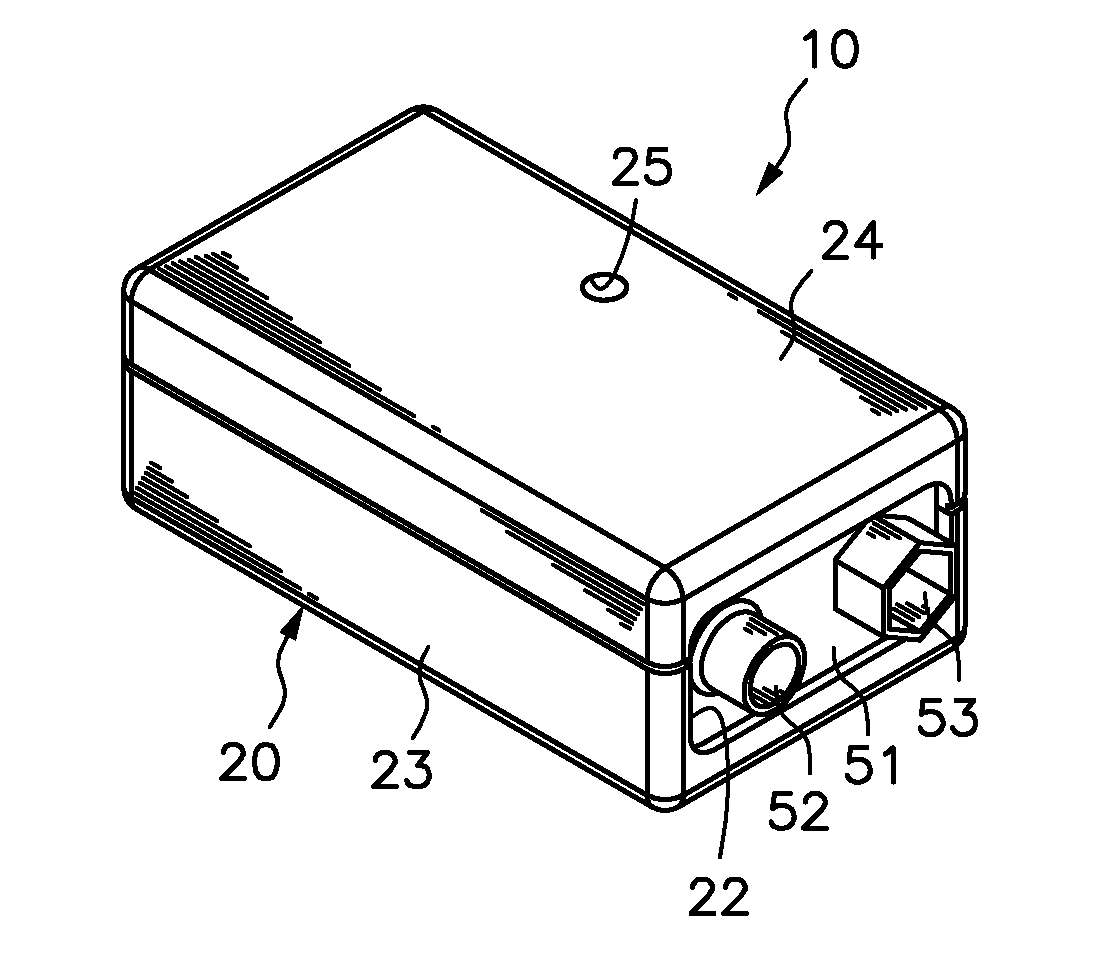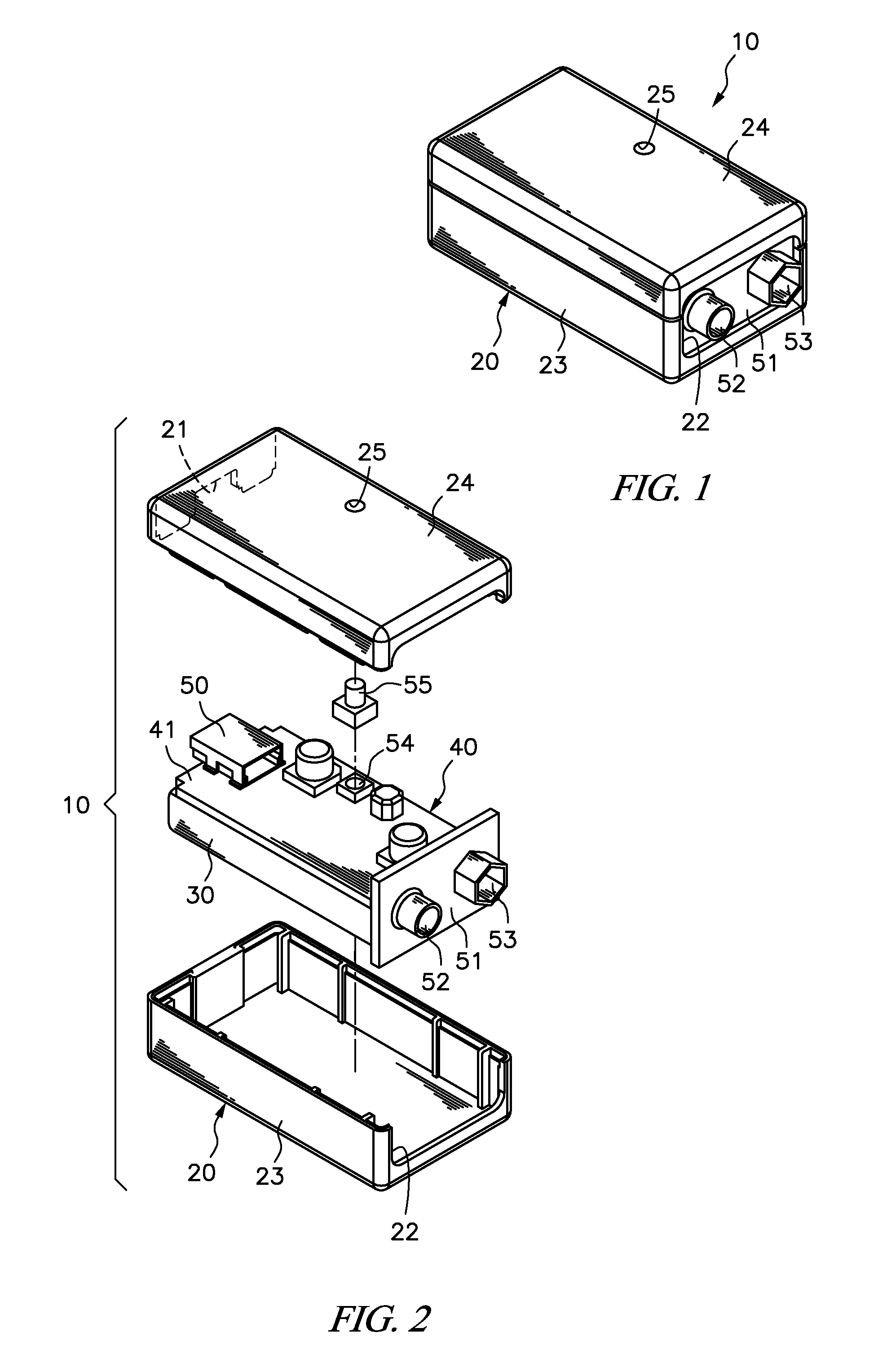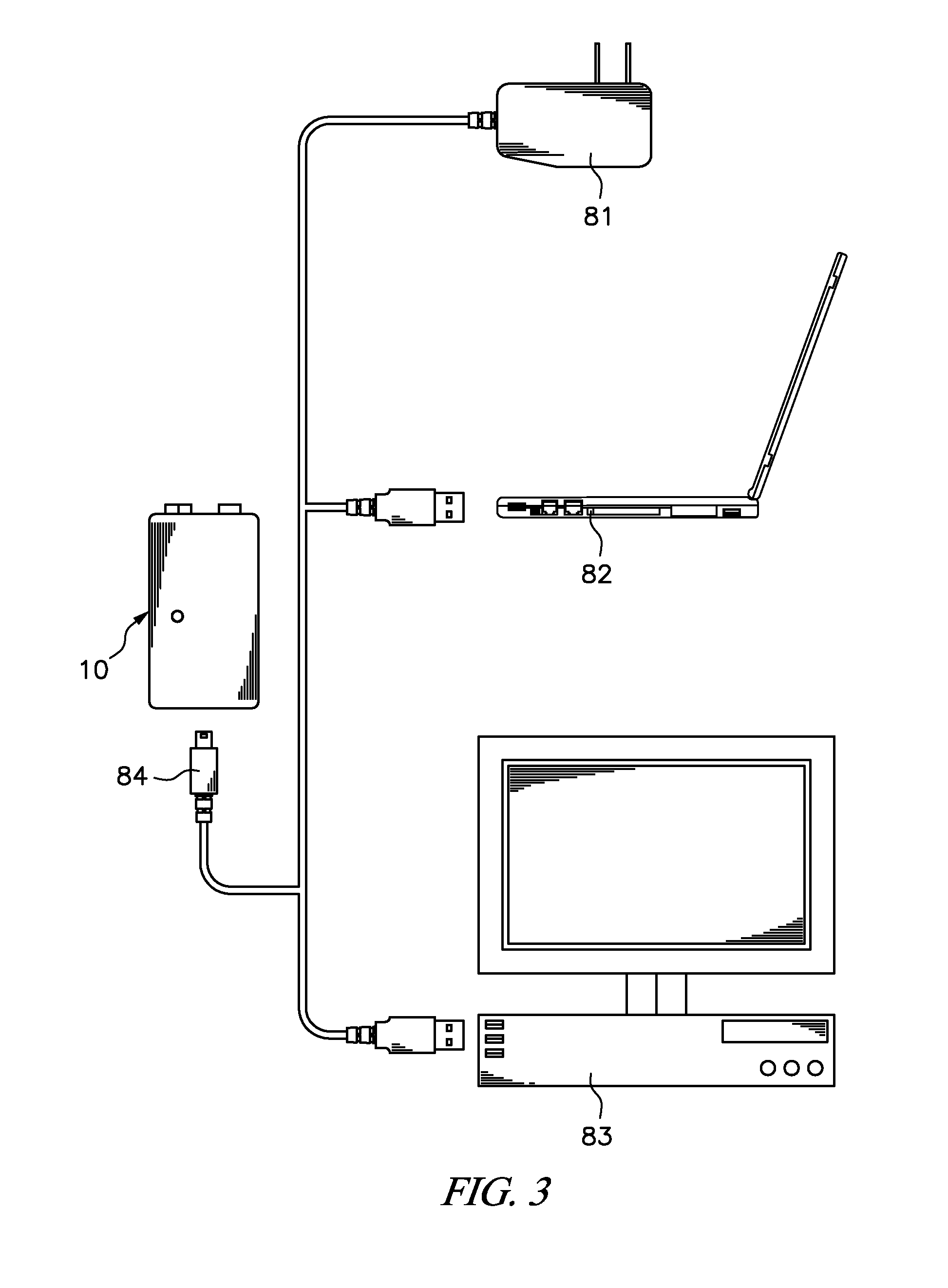Secondary battery
a second-generation battery and battery technology, applied in the field of batteries, can solve the problems of polluting the environment with internal electrolyte and other compounds, and achieve the effects of saving cost, economic and environmental benefits, and saving charging costs
- Summary
- Abstract
- Description
- Claims
- Application Information
AI Technical Summary
Benefits of technology
Problems solved by technology
Method used
Image
Examples
Embodiment Construction
[0024]Referring to FIGS. 1 and 2, a secondary battery 10 in accordance with the present invention is shown comprising a battery case 20, a battery body 30 and a battery charger 40.
[0025]The battery case 20 is shaped as a rounded rectangular prism like a regular 9V battery, and adapted for accommodating the battery body 30 and the battery charger 40. The battery case 20 has a window 21 and an opening 22 respectively located on the two distal ends thereof. The functions of the window 21 and the opening 22 will be discussed later. To facilitate installation, the battery case 20 consists of a first cover shell 23 and a second cover shell 24.
[0026]The battery body 30 is accommodated in the battery case 20, and adapted for receiving a voltage for charging and outputting a voltage when discharging. The battery body 30 is preferably a Li-polymer battery cell that can offer the benefits of no size limit, light weight and safe compared to conventional Li-ion battery cells for cell phone.
[0027...
PUM
 Login to View More
Login to View More Abstract
Description
Claims
Application Information
 Login to View More
Login to View More - R&D
- Intellectual Property
- Life Sciences
- Materials
- Tech Scout
- Unparalleled Data Quality
- Higher Quality Content
- 60% Fewer Hallucinations
Browse by: Latest US Patents, China's latest patents, Technical Efficacy Thesaurus, Application Domain, Technology Topic, Popular Technical Reports.
© 2025 PatSnap. All rights reserved.Legal|Privacy policy|Modern Slavery Act Transparency Statement|Sitemap|About US| Contact US: help@patsnap.com



